#danube upper austrian open
Text
about to be obsessed with a german/austrian eurotrash "thift shop" macklemore cover/remix overheard during the thiem v. prizmic match warmup at the danube open. does anyone know wtf i'm talking about cuz i think i need this song
0 notes
Text
Mauthausen Ch F: Hamad Medjedovic def. Filip Misolic [5] 6-2, 6-7(5), 6-4 Match Stats

📸 ATP Challenger Livestream (via website)
Bar the second set tie-breaker, which ended at the expense of Medjedovic's forehand rushes, this match was run in Medjedovic's terms in one way or another. This was visible toward the end of the match, but it went dramatic somehow.
Scoring a whopping 18 aces, Medjedovic stood out from his first serves by winning 75% of his points from there. Comparatively, double-faulting seven times did not help it for Medjedovic, especially since he was 9% points behind from those winning from their second serves than the first.
On the other hand, both players had their chances to break (9 each). Medjedovic's baseline control enabled him to convert 4 of them, bothering Misolic with drop shots whenever they were executed accurately. The only moment Misolic converted his break point came from the third set, where it even happened at the expense of Medjedovic's rushed errors toward the end of the match. He could not assert any other pressure, unfortunately, hence the match mostly passed by then.m
This is Medjedovic’s third career Challenger title after Luedenscheid (2022) and Szekesfehervar Challengers from earlier this year. Additionally, he propelled his rank up to 165 per the current state of the live rankings, confirming his spot in the Top 200 even further.
#atp world tour#atp tour#atp challenger#atp challenger tour#tennis updates#match stats#mauthausen challenger#danube upper austrian open presented by ske#hamad medjedovic#filip misolic#WatchChallengersFolks#ChallengerMatters
0 notes
Photo

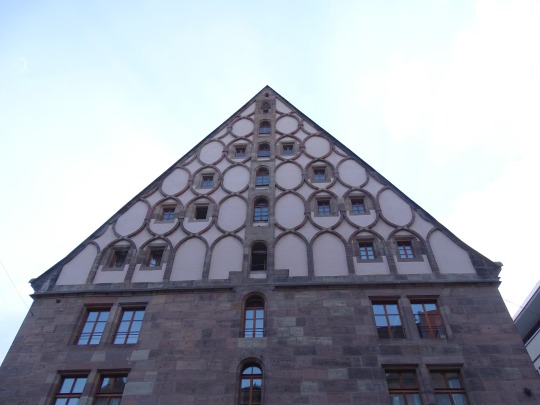

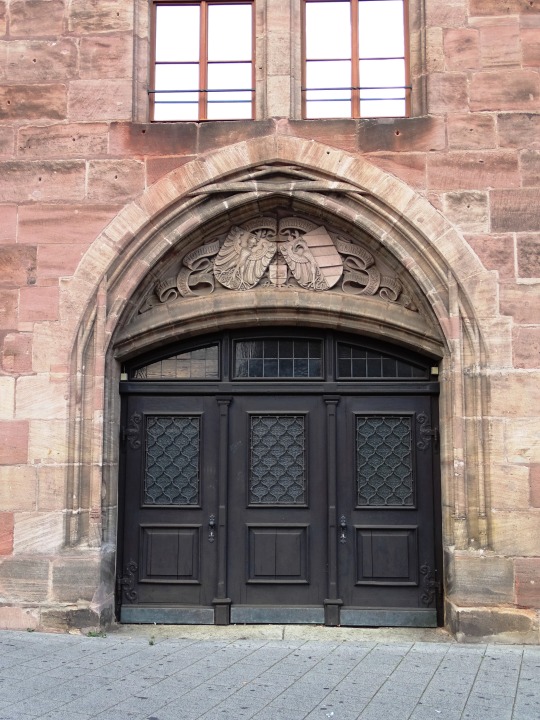
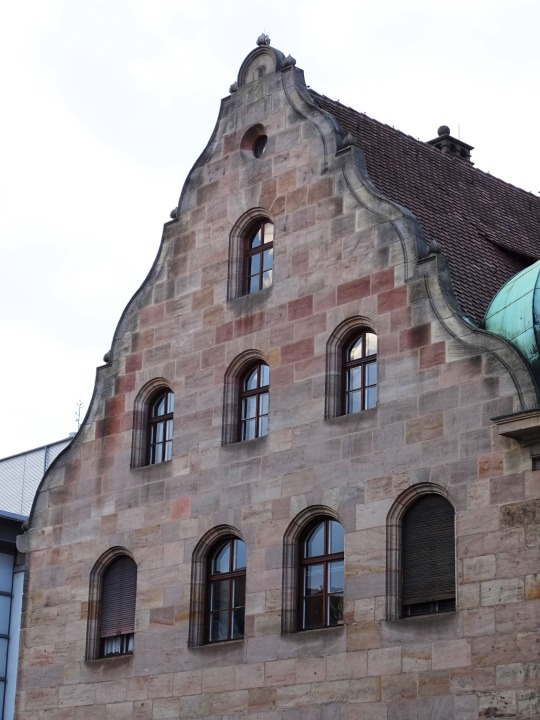
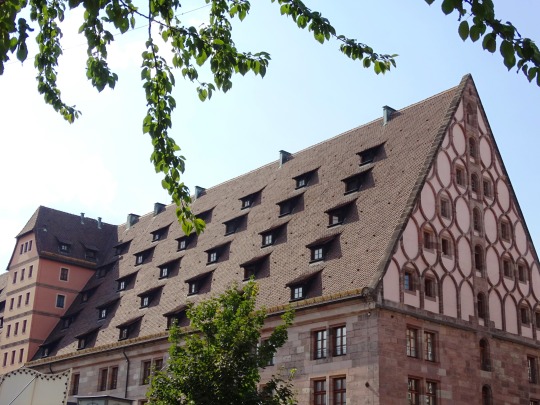




Former Zeughaus and Mauthalle, Nuremberg
Bavaria shares international borders with Austria (Salzburg, Tyrol, Upper Austria and Vorarlberg) and Czechia (Karlovy Vary, Plzeň and South Bohemian Regions), as well as with Switzerland (across Lake Constance to the Canton of St. Gallen). Because all of these countries are part of the Schengen Area, the border is completely open. Neighboring states within Germany are Baden-Württemberg, Hesse, Thuringia, and Saxony. Two major rivers flow through the state: the Danube (Donau) and the Main. The Bavarian Alps define the border with Austria (including the Austrian federal-states of Vorarlberg, Tyrol and Salzburg), and within the range is the highest peak in Germany: the Zugspitze. The Bavarian Forest and the Bohemian Forest form the vast majority of the frontier with the Czechia and Bohemia.
The major cities in Bavaria are Munich (München), Nuremberg (Nürnberg), Augsburg, Regensburg, Würzburg, Ingolstadt, Fürth, and Erlangen.
The geographic center of the European Union is located in the northwestern corner of Bavaria.
Source: Wikipedia
#Pfannenschmiedsgasse 24#Zeughaus#Hans Dietmair#1558#Mauthalle#Renaissance#armory#arsenal#old custom hall#Hallplatz#Nuremberg#Nürnberg#Bavaria#Bayern#Germany#Deutschland#architecture#travel#cityscape#original photography#summer 2020#tourist attraction#landmark#exterior#detail#last pictures from Germany
6 notes
·
View notes
Photo
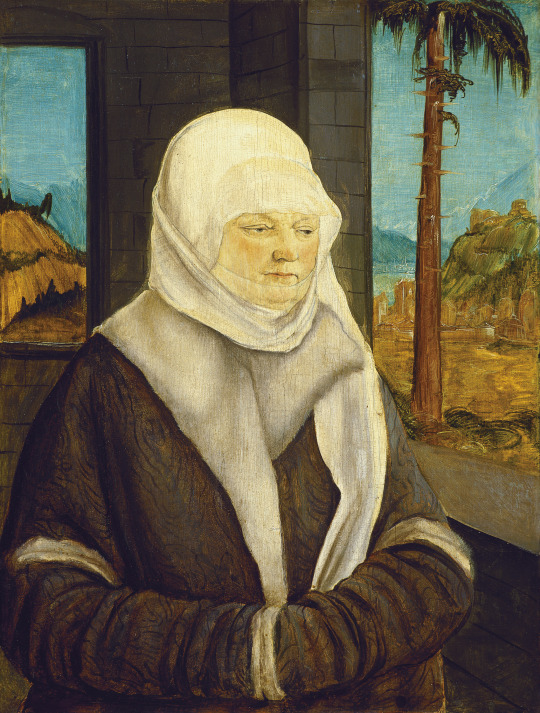
Wolf Huber (b.1485 - d.1553), ‘Portrait of a Woman of the Reuss Family’, oil on panel, c.1524, Austrian/German, currently in the collection of the Museo Nacional Thyssen Bornemisza, Madrid, Spain.
The history of this striking, volumetric image, which formerly belonged to Count Edmund Attems, can be traced through the catalogues of the Collection since 1934, the year of its acquisition. First published in 1903 while it was in the Count’s collection in Graz, it was attributed to a member of the Danube School due to the style of the landscape background. It was Friedländer in 1935 who first attributed it to Wolf Huber in response to a request for his opinion from the Villa Favorita, to which he replied in a letter now in the Museum’s archive. This attribution has been universally accepted despite the few portraits known by this artist. Wolf Huber may have trained in the family workshop, although it is also suggested that he made an early study trip (for which no documentary evidence survives) to the Upper Rhine and northern Italy. This would explain the influences and Renaissance innovations evident in his work.
Huber locates the sitter in the corner of an interior that opens onto a landscape through two asymmetrical windows. The woman, seen more than half-length, is simply dressed without accessories in a fine coat with broad fur collars and fur trimming on the sleeves. Absorbed in her thoughts, she has her hands concealed, whose rings might have provided additional information on her identity. Huber worked in a limited chromatic range, focusing on the grey and brown tones of the coat, wall and landscape with lighter tones in the face, headdress and fur trimming and the most saturated tones in the exterior view. He outlined the forms of the face and used a loose, diluted brushstroke for the graphic landscape in the background. The panel has a coat-of-arms on the reverse that has been identified as that of the Reuss family: a unicorn crowned with a helmet and a lion surrounded by foliate motifs. Around it is a scroll with a Latin motto that translates as “Idleness withers virtue” and a date whose last numbers are difficult to read.
The portrait has been compared with another two painted by the artist in 1526: that of Anton Hundertpfund in the National Gallery of Ireland, Dublin, and that of his wife in the John G. Johnson Collection in Philadelphia. Both figures have a background of a wall similar to the present panel but with the sky behind it rather than a landscape.
It has been thought that this panel may have been painted as an individual portrait or perhaps as the left wing of a diptych, although in that case, as Lübbeke noted, the woman would have occupied the place of honour normally assigned to the husband. If it were a diptych the coat-of-arms on the reverse would have been visible when the wing was closed. - Mar Borobia (x)
#wolf huber#unknown sitters#known artist#house of reuss#oil on panel#1520s#austrian#museo nacional thyssen bornemisza
1 note
·
View note
Text
House Rock in Vienna by Caramel Architects, Austria
House Rock in Vienna by Caramel Architekten, Viennese Luxury Property, Contemporary Austrian Residence
House Rock von Caramel in Vienna
7 December 2021
Architects: Caramel Architekten
Photos by Hertha Hurnaus
This the architecture firm’s newest single familiy house project:
House Rock in Vienna by Caramel
Above the city, nestled in the southern sunny vineyards of Vienna sits the newest Caramel project – House Rock.
On one hand, it rises like an eagle’s nest from the allotment neighborhood, allowing its residents possibly one of the best views from their bathtub into the surrounding hills of the Vienna Woods. On the other hand, House Rock blends into the hillside, its street-side closure contrasting with the extroversion of the tower-like lookout and the almost complete opening towards the west-facing terrace and pool.
Caramel’s snow-white Corian facade at House Rock contrasts with the surrounding allotment houses, some of which are cheerfully colorful, in a winking manner. At the same time, the smooth, white acrylic stone acts as a projection surface for the shadow play of the surrounding trees.
The client’s wish for high-quality materials was met discreetly and unpretentiously. Cast and polished Danube pebble terrazzo on the first floor and in the bathroom, white Corian on the facade, real wood oak planks and an opening Sky Frame glass facade 12 meters long make House Rock a real luxury piece.
House Rock is one of their few, as Caramel likes to call it with a smile, “red carpet” buildings, they occasionally build. Sometimes it just has to be a little more – without showing off.
Architecture: Caramel architekten
Photographer: Hertha Hurnaus
House Rock in Vienna images / information received 061221 from Caramel Architekten
Caramel Architekten
Location: Vienna, Austria, central Europe
New Vienna Architecture
Contemporary Viennese Architecture
Vienna Architecture Design – chronological list
Vienna Architecture Tours by e-architect
Austrian Houses
Austrian Architect
Austrian Residential Architecture
house e, Linz, Austria
Design: Caramel Architekten
image from architects
house e by Caramel Architekten
House H – family house, Linz, Upper Austria
Design: Caramel Architekten; Interior Friedrich Stiper
House H
House P, Klosterneuburg
Design: Caramel Architekten ; Barbara S. Bovelino
House P
Austrian Buildings
Austrian Architecture
Austrian Building Designs
Website: Caramel Architekten
Comments / photos for the House Rock in Vienna by Caramel – Austrian Architecture page welcome
The post House Rock in Vienna by Caramel Architects, Austria appeared first on e-architect.
0 notes
Photo

Teutonic military prowess
The upper Drina was crossed by the victorious Serbs, and Sarayevo seriously threatened. A badly beaten Austrian army retired to Austrian soil, to have its commander officially disgraced for the crime of failure. Whether because of difficulty in bringing adequate supplies across the marshy Save and over the foothills to the Austrian front, or because the Austrian forces had been unduly weakened in their month’s campaign against the Serb defenses, or because the difficulties of the Malyen position were underestimated and troops were detached to serve elsewhere, a third attempt to force the natural protective barriers of northern Serbia had ended in a costly defeat for the Teutons.
It was now evident that Austria, with many of her troops engaged on other fronts, could not assemble forces competent to dislodge the Serbians from their favorable defensive position. At the same time the need of controlling the Morava-Vardar trench was increasing. The Central Powers were besieged by the Allies, and an outlet to neutral lands and to the sea was a pressing necessity. The Turks needed munitions and the Central Powers needed food. A successful campaign was also required to wipe out the disgrace of past defeats at Serbian hands and to impress wavering neutrals with Teutonic military prowess. Hence was initiated the diplomatic campaign already described, which culminated in the peaceable conquest of the Maritza valley and the accession of Bulgarian troops to the ranks of the Central Powers. Conditions were now ripe for a combined Teuton-Bulgar campaign designed to conquer the entire Morava-Vardar trench.
Early October, 1915, found some 200,000 Germans and Austrians massed on the Save-Danube line, while a larger number of Bulgars were concentrating in the mountains along the eastern border. The main Serbian army stood behind the northern defensive line to meet the Austro-German attack, smaller forces alone being detailed for operations on the east. A Bulgarian offensive was to be met by the Greek army acting in concert with an Anglo- French expeditionary force. At the last moment the whole scheme of Serbian defense was shattered by King Constantine, who repudiated Greece’s treaty with Serbia and refused the promised support of his army. The entire length of the Morava-Vardar trench was thus thrown open to flank attacks from the east while the main Serb armies were trying to protect the northern entrance.
0 notes
Photo

Teutonic military prowess
The upper Drina was crossed by the victorious Serbs, and Sarayevo seriously threatened. A badly beaten Austrian army retired to Austrian soil, to have its commander officially disgraced for the crime of failure. Whether because of difficulty in bringing adequate supplies across the marshy Save and over the foothills to the Austrian front, or because the Austrian forces had been unduly weakened in their month’s campaign against the Serb defenses, or because the difficulties of the Malyen position were underestimated and troops were detached to serve elsewhere, a third attempt to force the natural protective barriers of northern Serbia had ended in a costly defeat for the Teutons.
It was now evident that Austria, with many of her troops engaged on other fronts, could not assemble forces competent to dislodge the Serbians from their favorable defensive position. At the same time the need of controlling the Morava-Vardar trench was increasing. The Central Powers were besieged by the Allies, and an outlet to neutral lands and to the sea was a pressing necessity. The Turks needed munitions and the Central Powers needed food. A successful campaign was also required to wipe out the disgrace of past defeats at Serbian hands and to impress wavering neutrals with Teutonic military prowess. Hence was initiated the diplomatic campaign already described, which culminated in the peaceable conquest of the Maritza valley and the accession of Bulgarian troops to the ranks of the Central Powers. Conditions were now ripe for a combined Teuton-Bulgar campaign designed to conquer the entire Morava-Vardar trench.
Early October, 1915, found some 200,000 Germans and Austrians massed on the Save-Danube line, while a larger number of Bulgars were concentrating in the mountains along the eastern border. The main Serbian army stood behind the northern defensive line to meet the Austro-German attack, smaller forces alone being detailed for operations on the east. A Bulgarian offensive was to be met by the Greek army acting in concert with an Anglo- French expeditionary force. At the last moment the whole scheme of Serbian defense was shattered by King Constantine, who repudiated Greece’s treaty with Serbia and refused the promised support of his army. The entire length of the Morava-Vardar trench was thus thrown open to flank attacks from the east while the main Serb armies were trying to protect the northern entrance.
0 notes
Photo
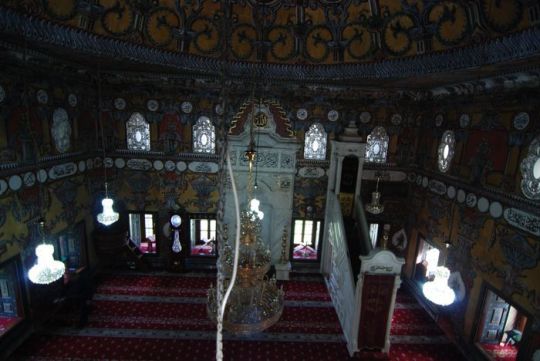
Teutonic military prowess
The upper Drina was crossed by the victorious Serbs, and Sarayevo seriously threatened. A badly beaten Austrian army retired to Austrian soil, to have its commander officially disgraced for the crime of failure. Whether because of difficulty in bringing adequate supplies across the marshy Save and over the foothills to the Austrian front, or because the Austrian forces had been unduly weakened in their month’s campaign against the Serb defenses, or because the difficulties of the Malyen position were underestimated and troops were detached to serve elsewhere, a third attempt to force the natural protective barriers of northern Serbia had ended in a costly defeat for the Teutons.
It was now evident that Austria, with many of her troops engaged on other fronts, could not assemble forces competent to dislodge the Serbians from their favorable defensive position. At the same time the need of controlling the Morava-Vardar trench was increasing. The Central Powers were besieged by the Allies, and an outlet to neutral lands and to the sea was a pressing necessity. The Turks needed munitions and the Central Powers needed food. A successful campaign was also required to wipe out the disgrace of past defeats at Serbian hands and to impress wavering neutrals with Teutonic military prowess. Hence was initiated the diplomatic campaign already described, which culminated in the peaceable conquest of the Maritza valley and the accession of Bulgarian troops to the ranks of the Central Powers. Conditions were now ripe for a combined Teuton-Bulgar campaign designed to conquer the entire Morava-Vardar trench.
Early October, 1915, found some 200,000 Germans and Austrians massed on the Save-Danube line, while a larger number of Bulgars were concentrating in the mountains along the eastern border. The main Serbian army stood behind the northern defensive line to meet the Austro-German attack, smaller forces alone being detailed for operations on the east. A Bulgarian offensive was to be met by the Greek army acting in concert with an Anglo- French expeditionary force. At the last moment the whole scheme of Serbian defense was shattered by King Constantine, who repudiated Greece’s treaty with Serbia and refused the promised support of his army. The entire length of the Morava-Vardar trench was thus thrown open to flank attacks from the east while the main Serb armies were trying to protect the northern entrance.
0 notes
Photo
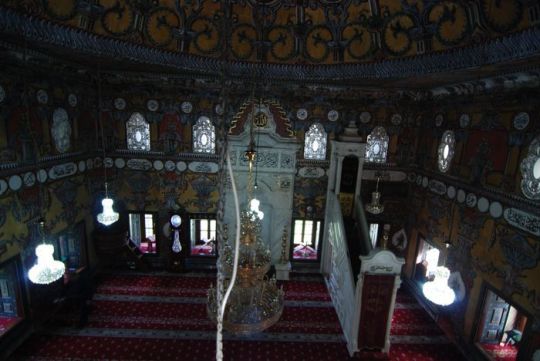
Teutonic military prowess
The upper Drina was crossed by the victorious Serbs, and Sarayevo seriously threatened. A badly beaten Austrian army retired to Austrian soil, to have its commander officially disgraced for the crime of failure. Whether because of difficulty in bringing adequate supplies across the marshy Save and over the foothills to the Austrian front, or because the Austrian forces had been unduly weakened in their month’s campaign against the Serb defenses, or because the difficulties of the Malyen position were underestimated and troops were detached to serve elsewhere, a third attempt to force the natural protective barriers of northern Serbia had ended in a costly defeat for the Teutons.
It was now evident that Austria, with many of her troops engaged on other fronts, could not assemble forces competent to dislodge the Serbians from their favorable defensive position. At the same time the need of controlling the Morava-Vardar trench was increasing. The Central Powers were besieged by the Allies, and an outlet to neutral lands and to the sea was a pressing necessity. The Turks needed munitions and the Central Powers needed food. A successful campaign was also required to wipe out the disgrace of past defeats at Serbian hands and to impress wavering neutrals with Teutonic military prowess. Hence was initiated the diplomatic campaign already described, which culminated in the peaceable conquest of the Maritza valley and the accession of Bulgarian troops to the ranks of the Central Powers. Conditions were now ripe for a combined Teuton-Bulgar campaign designed to conquer the entire Morava-Vardar trench.
Early October, 1915, found some 200,000 Germans and Austrians massed on the Save-Danube line, while a larger number of Bulgars were concentrating in the mountains along the eastern border. The main Serbian army stood behind the northern defensive line to meet the Austro-German attack, smaller forces alone being detailed for operations on the east. A Bulgarian offensive was to be met by the Greek army acting in concert with an Anglo- French expeditionary force. At the last moment the whole scheme of Serbian defense was shattered by King Constantine, who repudiated Greece’s treaty with Serbia and refused the promised support of his army. The entire length of the Morava-Vardar trench was thus thrown open to flank attacks from the east while the main Serb armies were trying to protect the northern entrance.
0 notes
Photo
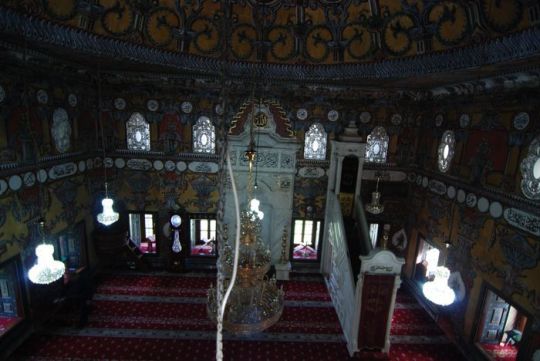
Teutonic military prowess
The upper Drina was crossed by the victorious Serbs, and Sarayevo seriously threatened. A badly beaten Austrian army retired to Austrian soil, to have its commander officially disgraced for the crime of failure. Whether because of difficulty in bringing adequate supplies across the marshy Save and over the foothills to the Austrian front, or because the Austrian forces had been unduly weakened in their month’s campaign against the Serb defenses, or because the difficulties of the Malyen position were underestimated and troops were detached to serve elsewhere, a third attempt to force the natural protective barriers of northern Serbia had ended in a costly defeat for the Teutons.
It was now evident that Austria, with many of her troops engaged on other fronts, could not assemble forces competent to dislodge the Serbians from their favorable defensive position. At the same time the need of controlling the Morava-Vardar trench was increasing. The Central Powers were besieged by the Allies, and an outlet to neutral lands and to the sea was a pressing necessity. The Turks needed munitions and the Central Powers needed food. A successful campaign was also required to wipe out the disgrace of past defeats at Serbian hands and to impress wavering neutrals with Teutonic military prowess. Hence was initiated the diplomatic campaign already described, which culminated in the peaceable conquest of the Maritza valley and the accession of Bulgarian troops to the ranks of the Central Powers. Conditions were now ripe for a combined Teuton-Bulgar campaign designed to conquer the entire Morava-Vardar trench.
Early October, 1915, found some 200,000 Germans and Austrians massed on the Save-Danube line, while a larger number of Bulgars were concentrating in the mountains along the eastern border. The main Serbian army stood behind the northern defensive line to meet the Austro-German attack, smaller forces alone being detailed for operations on the east. A Bulgarian offensive was to be met by the Greek army acting in concert with an Anglo- French expeditionary force. At the last moment the whole scheme of Serbian defense was shattered by King Constantine, who repudiated Greece’s treaty with Serbia and refused the promised support of his army. The entire length of the Morava-Vardar trench was thus thrown open to flank attacks from the east while the main Serb armies were trying to protect the northern entrance.
0 notes
Text
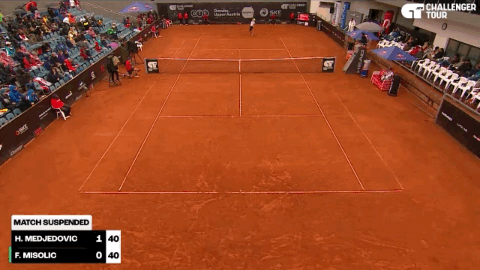


📸 ATP Challenger Livestream (via website)
The second set turned out to be more dramatic as Misolic tried to raise his level. This was apparent not only in his baseline game, which resulted in a backhand down-the-line winner to create a deuce before Medjedovic finally held that service game to 4-3, but also in his net game in some other parts of this match.
Another attention-grabbing point here came from three games later, where Medjedovic came up with a forehand winner response to Misolic’s no-look shot, before the former eventually held his service game to 6-5. However, a tie-breaker was set a game later, where both players engaged in a cat-and-mouse momentum chase before Medjedovic’s forehand rushes did not help it, resulting in Misolic taking the second set 7-6(5), bringing the match to the further distance as a result.
#atp world tour#atp tour#atp challenger#atp challenger tour#tennis updates#hot shots#break point#set point#mauthausen challenger#danube upper austrian open presented by ske#hamad medjedovic#filip misolic#WatchChallengersFolks#ChallengerMatters
0 notes
Photo

Teutonic military prowess
The upper Drina was crossed by the victorious Serbs, and Sarayevo seriously threatened. A badly beaten Austrian army retired to Austrian soil, to have its commander officially disgraced for the crime of failure. Whether because of difficulty in bringing adequate supplies across the marshy Save and over the foothills to the Austrian front, or because the Austrian forces had been unduly weakened in their month’s campaign against the Serb defenses, or because the difficulties of the Malyen position were underestimated and troops were detached to serve elsewhere, a third attempt to force the natural protective barriers of northern Serbia had ended in a costly defeat for the Teutons.
It was now evident that Austria, with many of her troops engaged on other fronts, could not assemble forces competent to dislodge the Serbians from their favorable defensive position. At the same time the need of controlling the Morava-Vardar trench was increasing. The Central Powers were besieged by the Allies, and an outlet to neutral lands and to the sea was a pressing necessity. The Turks needed munitions and the Central Powers needed food. A successful campaign was also required to wipe out the disgrace of past defeats at Serbian hands and to impress wavering neutrals with Teutonic military prowess. Hence was initiated the diplomatic campaign already described, which culminated in the peaceable conquest of the Maritza valley and the accession of Bulgarian troops to the ranks of the Central Powers. Conditions were now ripe for a combined Teuton-Bulgar campaign designed to conquer the entire Morava-Vardar trench.
Early October, 1915, found some 200,000 Germans and Austrians massed on the Save-Danube line, while a larger number of Bulgars were concentrating in the mountains along the eastern border. The main Serbian army stood behind the northern defensive line to meet the Austro-German attack, smaller forces alone being detailed for operations on the east. A Bulgarian offensive was to be met by the Greek army acting in concert with an Anglo- French expeditionary force. At the last moment the whole scheme of Serbian defense was shattered by King Constantine, who repudiated Greece’s treaty with Serbia and refused the promised support of his army. The entire length of the Morava-Vardar trench was thus thrown open to flank attacks from the east while the main Serb armies were trying to protect the northern entrance.
0 notes
Photo

Teutonic military prowess
The upper Drina was crossed by the victorious Serbs, and Sarayevo seriously threatened. A badly beaten Austrian army retired to Austrian soil, to have its commander officially disgraced for the crime of failure. Whether because of difficulty in bringing adequate supplies across the marshy Save and over the foothills to the Austrian front, or because the Austrian forces had been unduly weakened in their month’s campaign against the Serb defenses, or because the difficulties of the Malyen position were underestimated and troops were detached to serve elsewhere, a third attempt to force the natural protective barriers of northern Serbia had ended in a costly defeat for the Teutons.
It was now evident that Austria, with many of her troops engaged on other fronts, could not assemble forces competent to dislodge the Serbians from their favorable defensive position. At the same time the need of controlling the Morava-Vardar trench was increasing. The Central Powers were besieged by the Allies, and an outlet to neutral lands and to the sea was a pressing necessity. The Turks needed munitions and the Central Powers needed food. A successful campaign was also required to wipe out the disgrace of past defeats at Serbian hands and to impress wavering neutrals with Teutonic military prowess. Hence was initiated the diplomatic campaign already described, which culminated in the peaceable conquest of the Maritza valley and the accession of Bulgarian troops to the ranks of the Central Powers. Conditions were now ripe for a combined Teuton-Bulgar campaign designed to conquer the entire Morava-Vardar trench.
Early October, 1915, found some 200,000 Germans and Austrians massed on the Save-Danube line, while a larger number of Bulgars were concentrating in the mountains along the eastern border. The main Serbian army stood behind the northern defensive line to meet the Austro-German attack, smaller forces alone being detailed for operations on the east. A Bulgarian offensive was to be met by the Greek army acting in concert with an Anglo- French expeditionary force. At the last moment the whole scheme of Serbian defense was shattered by King Constantine, who repudiated Greece’s treaty with Serbia and refused the promised support of his army. The entire length of the Morava-Vardar trench was thus thrown open to flank attacks from the east while the main Serb armies were trying to protect the northern entrance.
0 notes
Text
Austrian Houses, Residential Property
Austrian House, Residential Architecture Austria, Alps Residences Images, Architects, Homes
Austrian Houses : Architecture
Key Contemporary Residential Buildings in central Europe – New Homes + Property
post updated 6 September 2021
Austrian Properties
e-architect select what we feel are the best examples of Austrian Houses. We aim to include houses in Austria that are either of top quality or interesting, or ideally both. We cover completed Austrian houses, new house designs, architectural exhibitions and architecture competitions across Austria.
Austrian Architecture Design – chronological list
Austrian House – Latest Designs
Austrian Residential Architecture – latest additions to this page, arranged chronologically:
9 July 2021
White House, Neusiedl am See, Burgenland
Design: X Architekten
photo : Gebhard Sengmüller
White House, Neusiedl am See
Driven by the desire to have their own house, the young family was able to find the perfect plot of land in Neusiedl am See. The connection to Vienna International Airport and the proximity to Vienna, Bratislava and Budapest were just as decisive for the choice of property as the hillside location on Kirchberg and the resulting view of Lake Neusiedl.
15 Nov 2020
House Mesh, Hagenberg near Linz
Design: Caramel architekten
photos by Paul Eis and Kerstin O.
House Mesh near Linz
A generous green roof as a cut-out and folded landscape forms the largest space-forming element of the house. The lightweight timber construction with a ventilated metal facade and large glass elements form the remaining outer skin surfaces.
post updated 24 Oct 2020
House in Zellerndorf
Design: franz, Wien
photo : Lisa Rastl
Wohnhaus Zellerndorf
The site is located in a settlement of detached single-family houses, characteristic for the 1970s. The traditional arrangement of functions for each storey: basement/garage; ground floor/living space; attic floor/ bedrooms; has been transformed into a linear order. the so called „streckhof“, the original farm model for this area has been adapted by stringing together different functions in one floor.
22 Oct 2020
Perchtoldsdorf Villa
Design: Jan Proksa Studio
photo : BoysPlayNice
Perchtoldsdorf Villa, Mödling District
Imagining a villa, one pictures a sprawling complex of buildings and land, echoing dynastic opulence. For this villa commission in a quiet village outside of Vienna, Jan Proksa was challenged with maximizing the volume of a difficult and narrow plot of land in order to create a modern living space for a two-generation family.
22 Sep 2020
Living by the harbour, Sintstrasse, Linz, Upper Austria
Design: X ARCHITEKTEN
photo : Lisi Grebe
Living by the harbour Linz
The property is located at the transition between the urban parts and the industrial areas at the port of the city of Linz and is to be newly built and redensified with rental apartments of the social housing and a kindergarten. The main square two kilometres away and the local recreation areas along the Danube are within walking distance.
10 Dec 2018
House Dellacher, Oberwart, Burgenland
Architects: Raimund Abraham and Johannes Handler
photograph : Rainer Schoditsch
House Dellacher in Oberwarta
The House Dellacher was built in Oberwart, Austria, between 1965 and 1969 based on the designs by Austrian born American architect Raimund Abraham for photographer Max Dellacher.
31 Jul 2017
Casa Invisibile
Design: DMAA
photo © https://ift.tt/3tmxmfY
Casa Invisibile
Casa Invisibile is a flexible housing unit, which consists of a prefabricated wood structure designed for turnkey implementation at any designated site. Maximum flexibility and spatial quality are the key elements in its concept of development.
12 Jun 2017
A House for Art, Hohe Wand, Wiener Neustadt-Land, Lower Austria
Architects: Veech x Veech
photo : Vera Subkus
A House for Art in Hohe Wand
Vienna-based multidisciplinary architecture and design practice Veech X Veech set up a multifunctional artist studio in the environs of Vienna. The combination of studio, gallery space and dwelling provides a unique living and working environment for the renowned artist couple Vadim Kosmatschof, sculptor, and Elena Koneff, visual artist.
5 Jun 2017 & 26 Sep 2016
House D – single family house, Austria
Design: Caramel Architekten with absolut-architekten
photo : Christian Sperr
Haus D Austria Property near Vienna
5 Apr 2016
house e – single family house, Linz
Design: Caramel Architekten
photo : Martin Pröll and Caramel
Upper Austria Property
Located on the periphery of the city, the plot of land offers a spectacular view of Linz, as long as one builds high enough to be able to gaze over the neighbouring properties.
4 Nov 2015
Deluxe Mountain Chalets, Styria
Design: Viereck Architects
photograph : Andreas Tischlerl
Deluxe Mountain Chalets Styria
Set within the scenic mountain panorama of upper Styria, Austria, the “Deluxe Mountain Chalets” serve as an extension to the numerously awarded high- end restaurant “Wirtshaus Steirereck”.
20 Aug 2013
Villa S, Upper Austria
Design: TWO IN A BOX Architects
photo : Simon Bauer
Villa S
The villa is L-shaped and aligned to the south-west featuring generous glazing to the porch in front of the house and a garden with water areas. The light hill-side location, the expanded ground floor facing the street and the carport form a generous forecourt and entrance hall.
20 Aug 2013
Villa Upper Austria
Design: TWO IN A BOX
photo from architects
Villa Upper Austria
“Between lightness and gravity”
Due to the steep sloping terrain, the view and the direction of the sun special attention was required with regard to the alignment of living rooms and sleeping rooms. The villa has three levels adapted to the line of sight and staggered towards each other on top of a basement garage.
23 Apr 2013
Haus Walde, Tyrol
Design: GOGL Architekten
photo : Mario Webhofer
Tyrol House
The client requested an open, light-filled room with the garden and the beautiful backdrop of the Kitzbühl Alps integrated into the living space.
23 Apr 2013
Haus Wiesenhof, Tyrol
Design: GOGL Architekten
photo : Mario Webhofer
Haus Wiesenhof
The house communicates with the dominant mountain range, with every view resembling a painting. The decision to utilise archaic materials was made quite consciously to quote the surrounding farmsteads. The client wanted an atmosphere that was light and airy, but also cosy.
Key Recent Austrian Houses
Austria Residential Architecture in 2012, chronological:
14 Nov 2012
haus_y2, Linz, north west Austria
Design: Destilat
photograph : Mark Sengstbratl
House in Linz
The property is located on a steep slope at the foot of pöstlingberg in the immediate vicinity of the danube. like all buildings along this residential estate’s main street, its width amounts only to 21 m. some of the neighbouring structures extend almost to the property’s boundary; therefore an orientation towards east and west was of lesser importance.
11 Jun 2012
L-house, Burgenland
Design: Architects Collective
photo from architect
New House in Austria
The new home for a young family is harmoniously placed into the hilly landscape. The traditional and typical L-shaped floor plan of the region was developed further in an imaginative and thoughtful way advancing modern home, energy and living concepts. The L-House is an avant-garde architectural gem that merges the needs of it’s residents with the environment.
My Home is my Patio, Linz, Upper Austria
Design: xarchitekten
picture © Max Nirnberger
My Home is my Patio
EdelWeiss Residences, Katschberg
Design: Matteo Thun & Partners
photo © jens weber, munich
EdelWeiss Residences
Austrian Houses
Austria Residential Designs, alphabetical:
Amalia House, Kirchbach
Design: Grid Architects
photograph : Lukas Schaller
Austrian holiday house
The Beatle of Kagran, Vienna
Design: flatzarchitects
image from architect
Beatle of Kagran
Folded House, Lower Austria
Design: xarchitekten
picture : Max Nirnberger
Folded House Austria
House H – family house, Linz, Upper Austria
Design: Caramel Architekten ; interior friedrich stiper
photo : h.hurnaus
House H
House Kaps – extension, Saalfelden
Design: Caramel Architekten
photo : j. felsch + caramel
House Kaps
House Lina – for a mother with a child, Linz
Design: Caramel Architekten
photo : caramel
House Lina
House M, Linz, Upper Austria
Design: Caramel Architekten
photo : otto hainzl + caramel
House M
House P, Klosterneuburg
Design: Caramel Architekten ; barbara s. bovelino
photo : hertha hurnaus
House P
P-K House, Punitz, Lower Austria
Design: Pichler & Traupmann Architekten
photo from architects
Haus PK Punitz
More Austrian Houses online soon
Location: Austria, central Europe
Austrian Architecture : A-K
Austrian Building Designs : L-Z
Vienna Buildings
Architecture Developments in countries near to Austria
Hungarian Architecture
Italian Architecture
Swiss Buidings
German Buildings
Czech Architecture
Slovenian Buildings
Croatian Developments
Slovakian Buildings
Austrian architects : Coop Himmelb(l)au
Buildings / photos for the Austrian Residential Architecture page welcome
The post Austrian Houses, Residential Property appeared first on e-architect.
0 notes
Photo
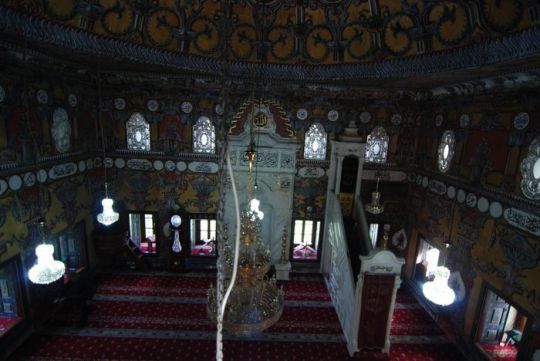
Teutonic military prowess
The upper Drina was crossed by the victorious Serbs, and Sarayevo seriously threatened. A badly beaten Austrian army retired to Austrian soil, to have its commander officially disgraced for the crime of failure. Whether because of difficulty in bringing adequate supplies across the marshy Save and over the foothills to the Austrian front, or because the Austrian forces had been unduly weakened in their month’s campaign against the Serb defenses, or because the difficulties of the Malyen position were underestimated and troops were detached to serve elsewhere, a third attempt to force the natural protective barriers of northern Serbia had ended in a costly defeat for the Teutons.
It was now evident that Austria, with many of her troops engaged on other fronts, could not assemble forces competent to dislodge the Serbians from their favorable defensive position. At the same time the need of controlling the Morava-Vardar trench was increasing. The Central Powers were besieged by the Allies, and an outlet to neutral lands and to the sea was a pressing necessity. The Turks needed munitions and the Central Powers needed food. A successful campaign was also required to wipe out the disgrace of past defeats at Serbian hands and to impress wavering neutrals with Teutonic military prowess. Hence was initiated the diplomatic campaign already described, which culminated in the peaceable conquest of the Maritza valley and the accession of Bulgarian troops to the ranks of the Central Powers. Conditions were now ripe for a combined Teuton-Bulgar campaign designed to conquer the entire Morava-Vardar trench.
Early October, 1915, found some 200,000 Germans and Austrians massed on the Save-Danube line, while a larger number of Bulgars were concentrating in the mountains along the eastern border. The main Serbian army stood behind the northern defensive line to meet the Austro-German attack, smaller forces alone being detailed for operations on the east. A Bulgarian offensive was to be met by the Greek army acting in concert with an Anglo- French expeditionary force. At the last moment the whole scheme of Serbian defense was shattered by King Constantine, who repudiated Greece’s treaty with Serbia and refused the promised support of his army. The entire length of the Morava-Vardar trench was thus thrown open to flank attacks from the east while the main Serb armies were trying to protect the northern entrance.
0 notes
Photo
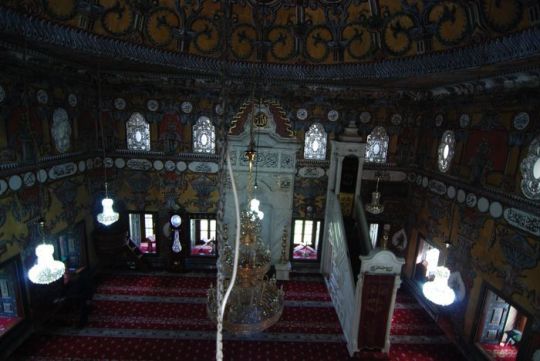
Teutonic military prowess
The upper Drina was crossed by the victorious Serbs, and Sarayevo seriously threatened. A badly beaten Austrian army retired to Austrian soil, to have its commander officially disgraced for the crime of failure. Whether because of difficulty in bringing adequate supplies across the marshy Save and over the foothills to the Austrian front, or because the Austrian forces had been unduly weakened in their month’s campaign against the Serb defenses, or because the difficulties of the Malyen position were underestimated and troops were detached to serve elsewhere, a third attempt to force the natural protective barriers of northern Serbia had ended in a costly defeat for the Teutons.
It was now evident that Austria, with many of her troops engaged on other fronts, could not assemble forces competent to dislodge the Serbians from their favorable defensive position. At the same time the need of controlling the Morava-Vardar trench was increasing. The Central Powers were besieged by the Allies, and an outlet to neutral lands and to the sea was a pressing necessity. The Turks needed munitions and the Central Powers needed food. A successful campaign was also required to wipe out the disgrace of past defeats at Serbian hands and to impress wavering neutrals with Teutonic military prowess. Hence was initiated the diplomatic campaign already described, which culminated in the peaceable conquest of the Maritza valley and the accession of Bulgarian troops to the ranks of the Central Powers. Conditions were now ripe for a combined Teuton-Bulgar campaign designed to conquer the entire Morava-Vardar trench.
Early October, 1915, found some 200,000 Germans and Austrians massed on the Save-Danube line, while a larger number of Bulgars were concentrating in the mountains along the eastern border. The main Serbian army stood behind the northern defensive line to meet the Austro-German attack, smaller forces alone being detailed for operations on the east. A Bulgarian offensive was to be met by the Greek army acting in concert with an Anglo- French expeditionary force. At the last moment the whole scheme of Serbian defense was shattered by King Constantine, who repudiated Greece’s treaty with Serbia and refused the promised support of his army. The entire length of the Morava-Vardar trench was thus thrown open to flank attacks from the east while the main Serb armies were trying to protect the northern entrance.
0 notes